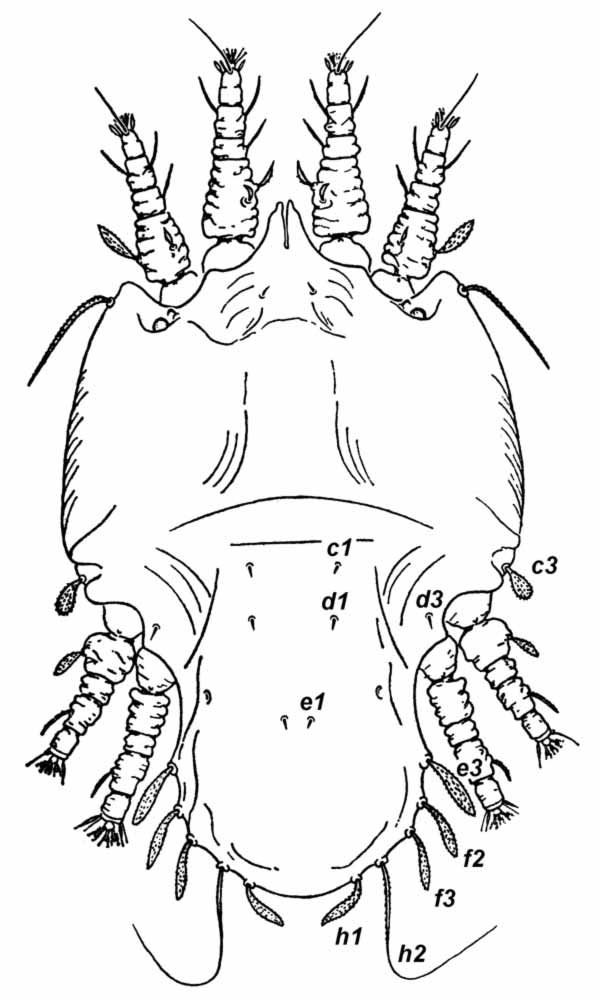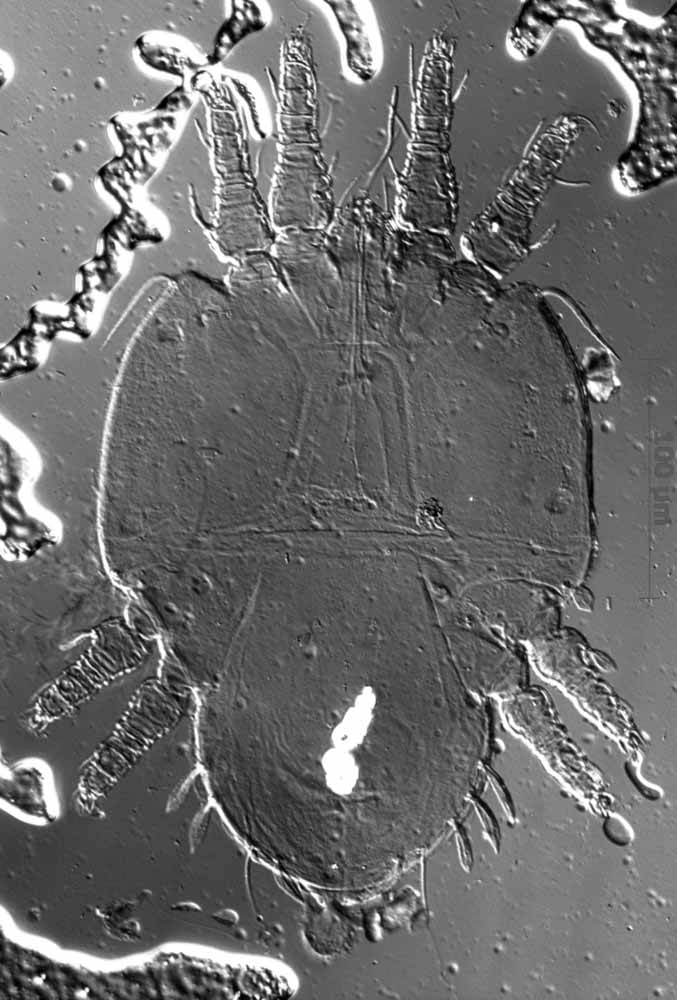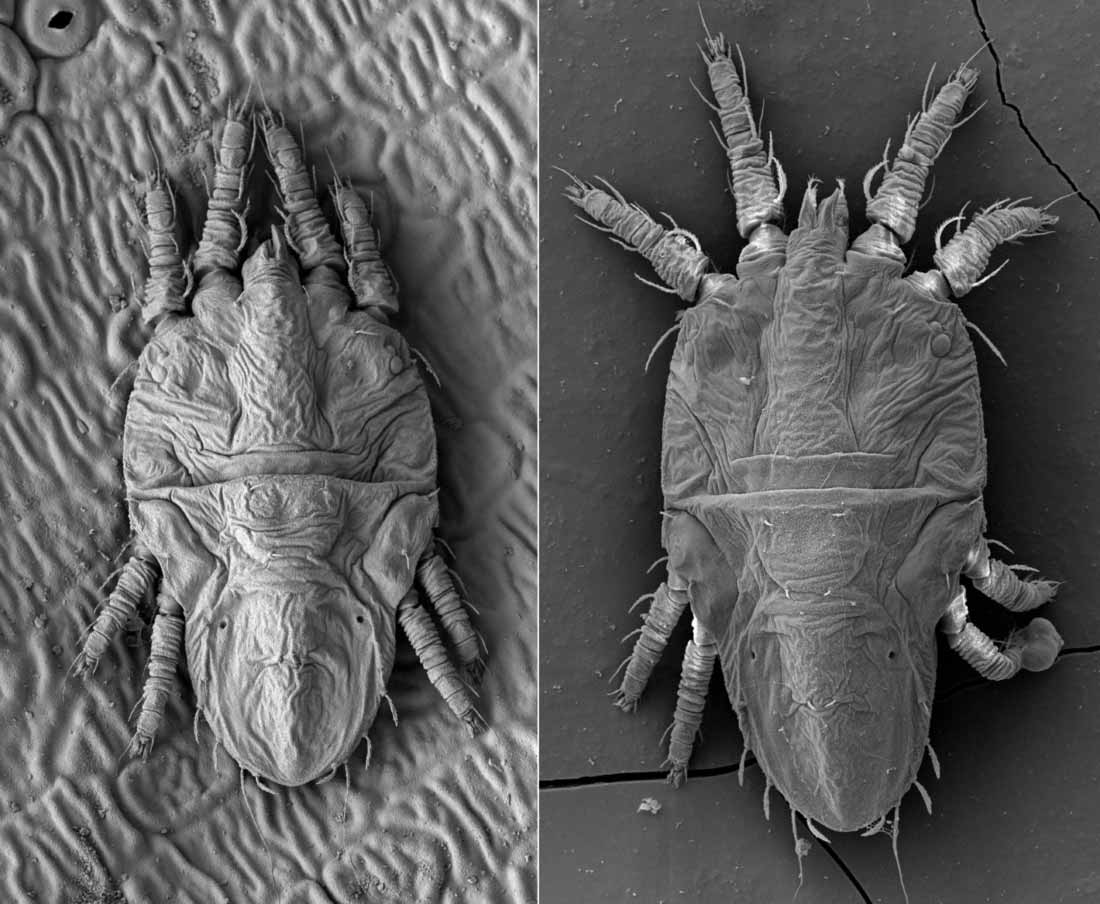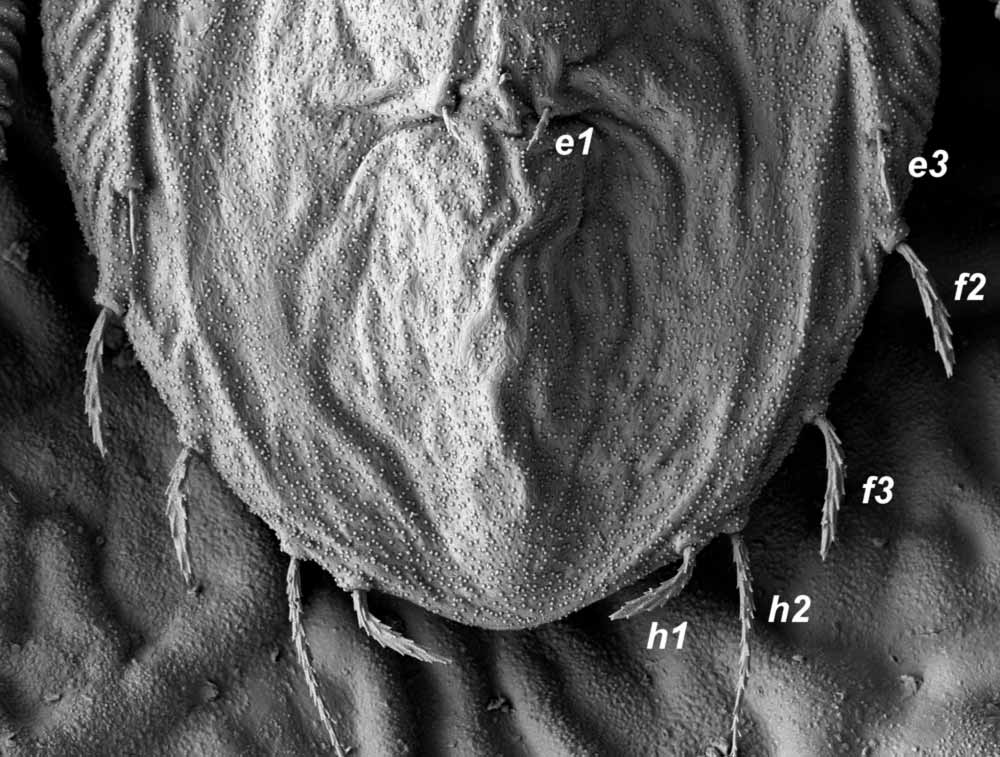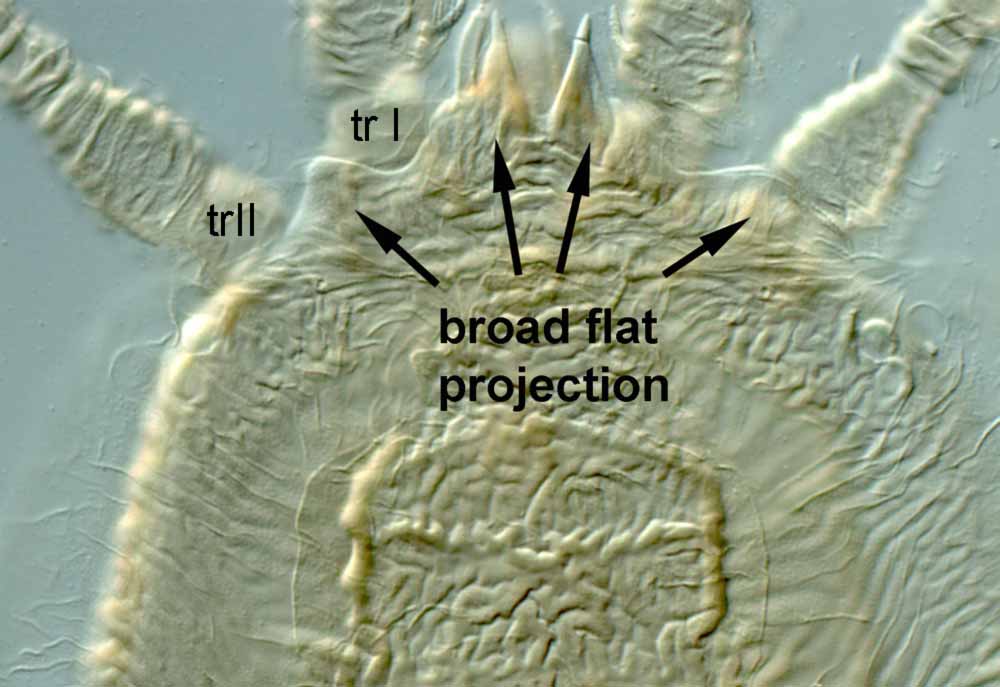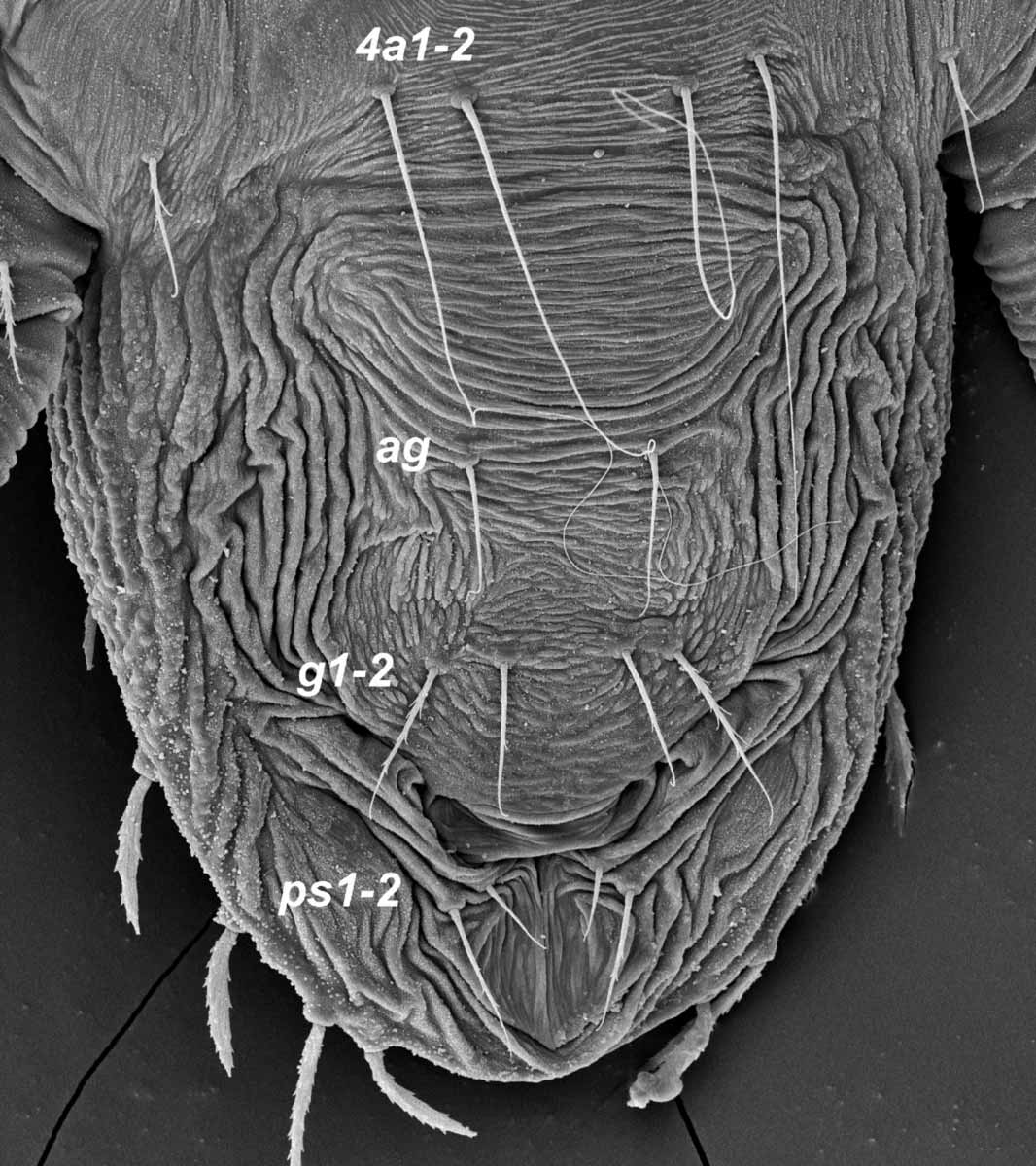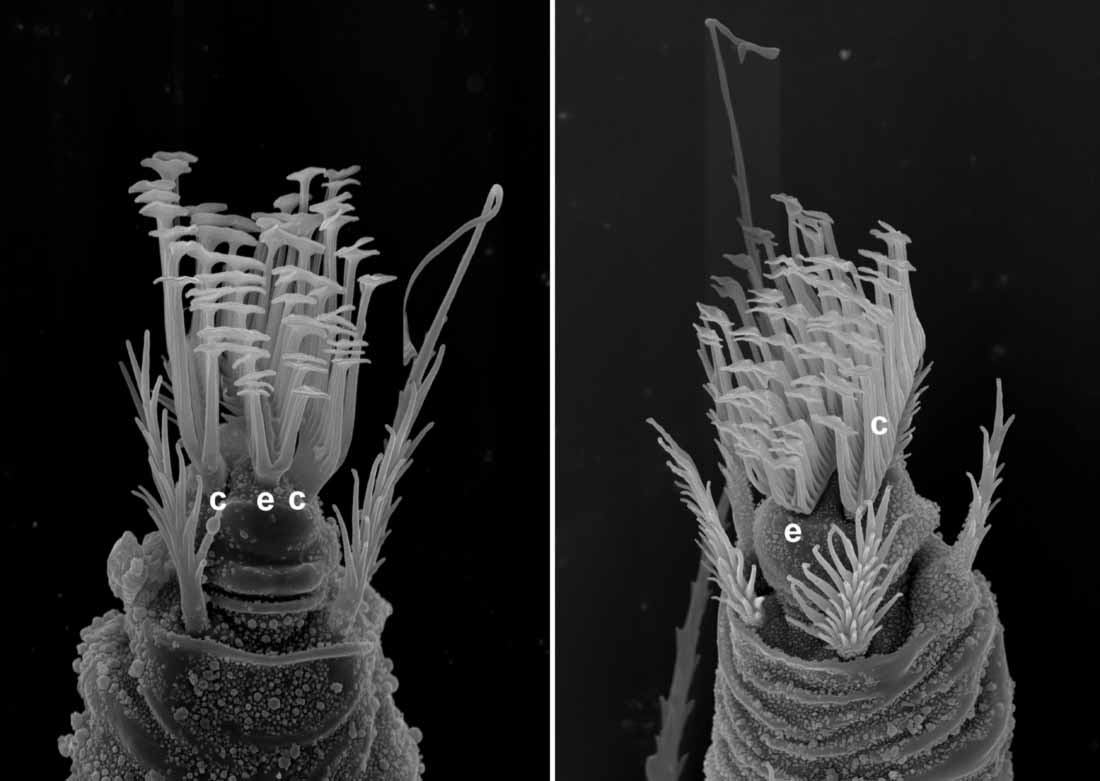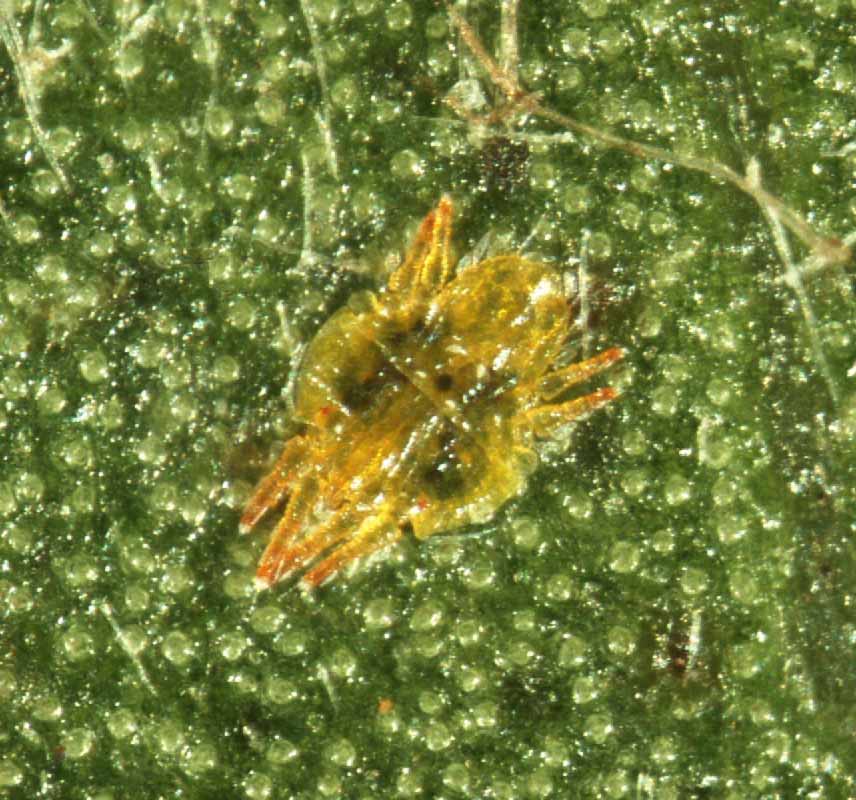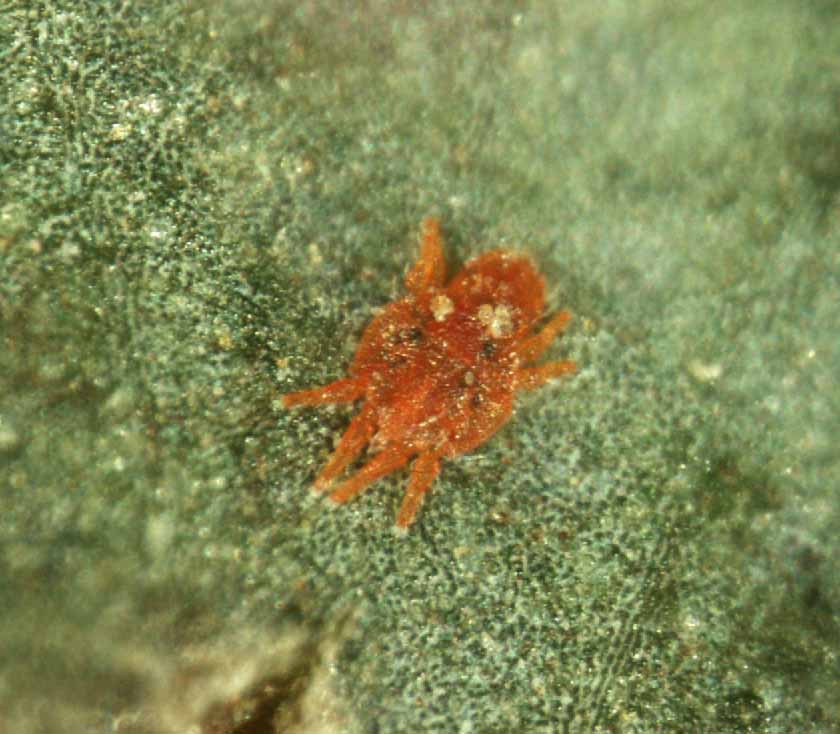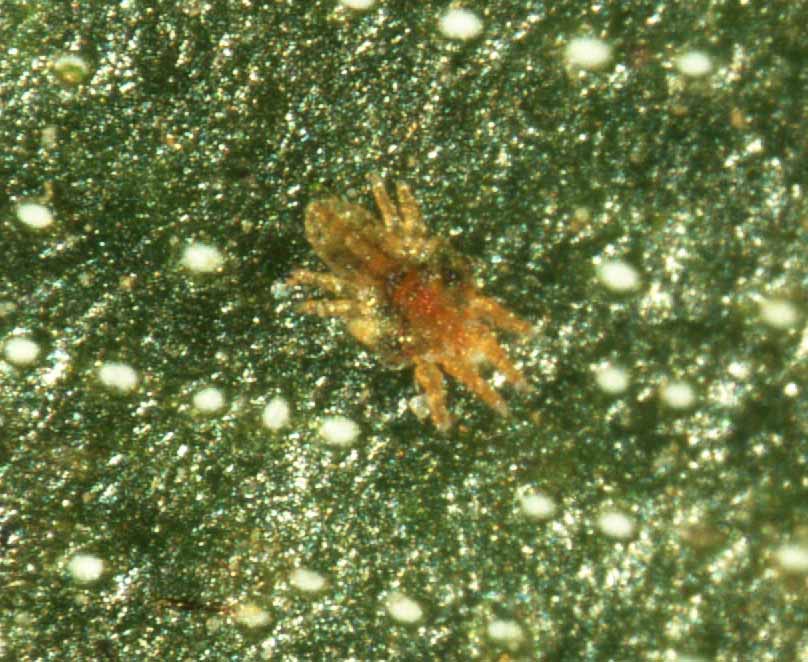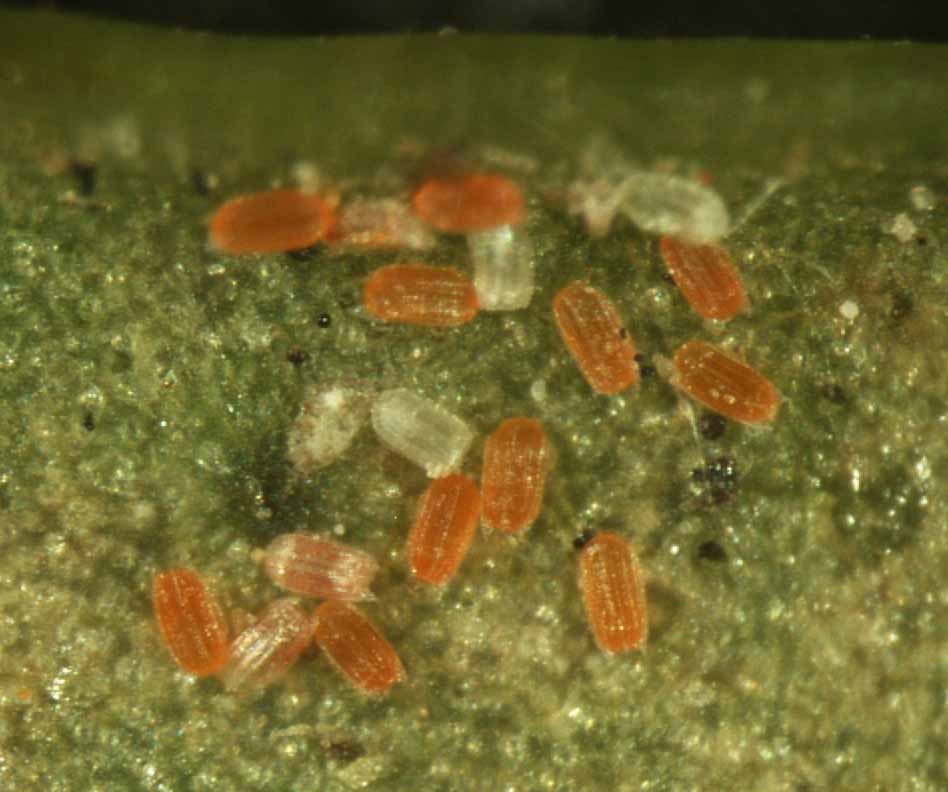Tenuipalpus
|
Fig. 1. Tenuipalpus bucidus female dorsum (after Pritchard & Baker 1958). |
|
Fig. 2. Tenuipalpus bucidus female dorsum (type specimen). |
|
Fig. 3. Tenuipalpus pacificus female dorsum (images: Gary Bauchan, USDA-ARS). |
|
Fig. 4. Tenuipalpus pacificus female posterior dorsum (image: Gary Bauchan, USDA-ARS). |
|
Fig. 5. Tenuipalpus sp. female anterior prodorsum, with detail of broad flat projection. |
|
Fig. 6. Tenuipalpus pacificus female posterior venter (image: Gary Bauchan, USDA-ARS). |
|
Fig. 7. Tenuipalpus pacificus female, claws (c) and empodium (e) pad-like. |
|
Fig. 8. Tenuipalpus sp. female live. |
|
Fig. 9. Tenuipalpus sp. female live. |
|
Fig. 10. Tenuipalpus sp. female live. |
|
Fig. 11. Tenuipalpus sp. live eggs. |
Key characters
- c2 , d2, e2, absent (Figs. 1-3)
- c1, f2 present/absent (Fig. 4)
- h2 elongate
- anterior margin of prodorsum with broad flat projection over gnathosoma and coxae I-II, strongly forked medially (Fig. 5)
- ventral and genital plates developed, often slightly sclerotised, often fused (Fig. 6)
- anal plates not developed
- 2 pairs ps setae
- 1-3 segmented palp
- both claws and empodium are pad-like, with tenent hairs (Fig. 7)
Similar taxa
Brevipalpus - does not have h2 elongate
Tenuilichus - c1, d1, e1 absent
Ultratenuipalpus - does not have h2 elongate
Number of species
over 300
Authority
Donnadieu
Distribution
World wide.
The African (91 spp.), Oriental (69 spp.), Neotropical (~64 spp.) and Western Palearctic (29 spp.) regions are the most species diverse.
Countries include: Brazil, China, France, India, Iran, Iraq, Mexico, Pakistan, The Philippines, South Africa, USA.
Hosts
Many families of host plant including: Anacardiaceae, Arecaceae, Asteraceae, Combretaceae, Euphorbiaceae, Fabaceae, Meliaceae, Mimosaceae, Myrtaceae, Orchidaceae, Rosaceae, Rubiaceae.
Colour
- colour varies from red, orange to yellow-green when alive (Figs. 8-10)
- eggs tend to be red, yellow-orange (Fig. 11)
Remarks
Many species with propodosoma much wider than hysterosoma. Considered to be a paraphyletic genus.

